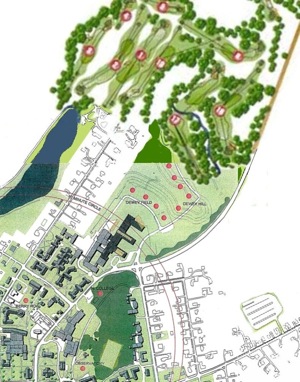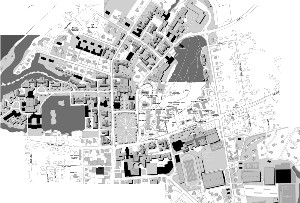The designs for Memorial Field’s West Stand or the replacement for Thayer Dining Hall have not been revealed, but a few smaller items of interest have come out over the past few months:
- Construction of the ’78 Life Science Center began in early September, notes the OPDC, after the Occom Pond Neighborhood Association’s appeal of Hanover’s zoning permission was dismissed (press release). A webcam shows the site when it’s light out.
- The reconstruction of Rolfe Field and the construction of the surrounding Biondi Park have been delayed by site conditions, quoted Jim Hunter of Clark Construction Company: “Dartmouth is just so old that you never know what you’re going to
find underneath the ground.” When students were digging trenches in the area during World War I, they found an old house foundation. - Moore Ruble Yudell has a page up for the North Campus master plan.
- A huge amount of effort has gone into building a sprawling housing development near the hospital at Gile Hill, and into making it not seem like affordable housing (site map). The project was designed by Gossens Bachman Architects of Montpelier, designers of the Rock of Ages Corporation Visitor Center and of a design for the Vermont Granite Museum.
—–
[Update 03.31.2013: Broken link to Gile Hill plan and site map removed.]
[Update 01.05.2013: Broken link to master plan replaced.]


